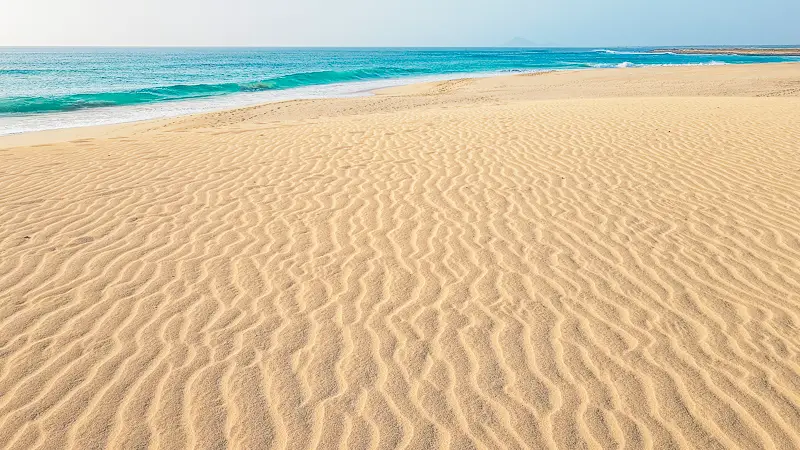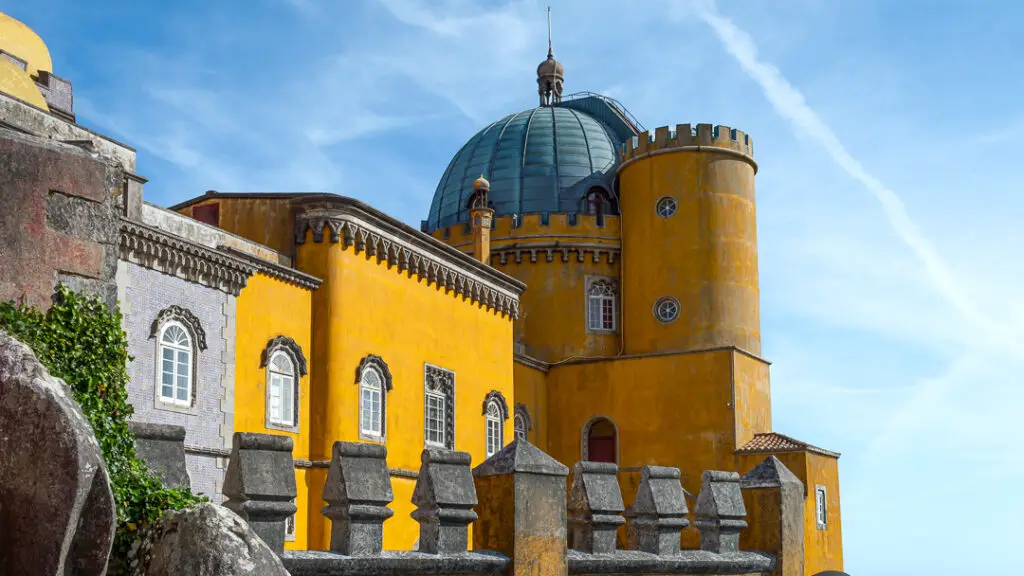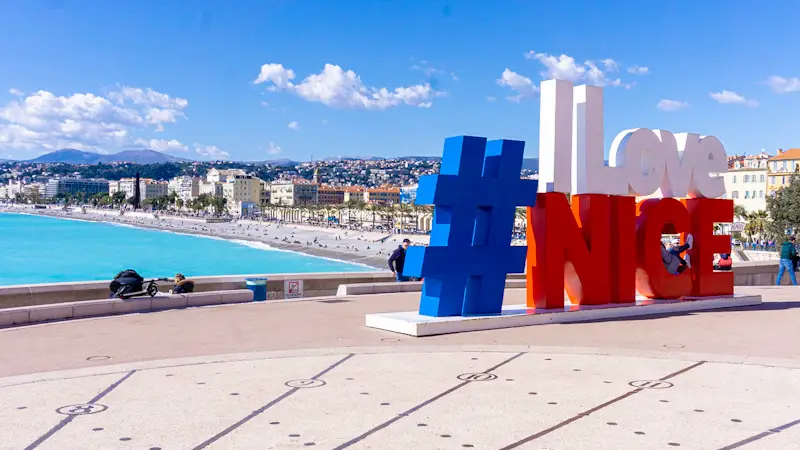Are you planning a holiday in Cape Verde for the first time and not sure what you need to know? You’ve come to the right place! I put this travel guide together to share my tips, advice, and research so you can gain valuable insight into Cape Verde and all the amazingly unique things to do there.
Where is Cape Verde?
Cape Verde is an island nation located in West Africa. It sits south of the Canary Islands and west of mainland Africa, essentially making Cape Verde the westernmost country in Africa. Sal island, one of Cape Verde’s eastern most island, is about 630 kilometers away from Dakar, Senegal.
The Cape Verde archipelago is made up of 10 islands, one of which is uninhabited. The 10 islands are divided into two categories: Barlavento (windward), which are located in the north, and Sotavento (leeward), located in the south.
The Barlavento Islands include Santo Antão, São Vicente, Santa Luzia, São Nicolau, Sal, and Boa Vista. Santa Luzia remains uninhabited.
The Sotavento Islands include Brava, Fogo, Santiago, and Maio.
Information to know for your Cape Verde holidays
Official Capital: Praia
Cultural capital: Mindelo
Currency: Cabo Verdean Escudo (CVE); symbol is $ after the number (for example, 100$)
Electrical socket type: European standard, plug types C or F
Official language: Portuguese
Spoken languages: Crioulo is widely spoken amongst the locals, with different dialects between islands. Some Cape Verdeans also speak English, Spanish, or French in the tourist areas.
Islands for hiking: Brava, Fogo, Santo Antão, São Nicolau
Islands for culture: São Vicente, Santiago
Islands for beaches: Sal, Boa Vista, Maio
Unofficial slogan: No stress
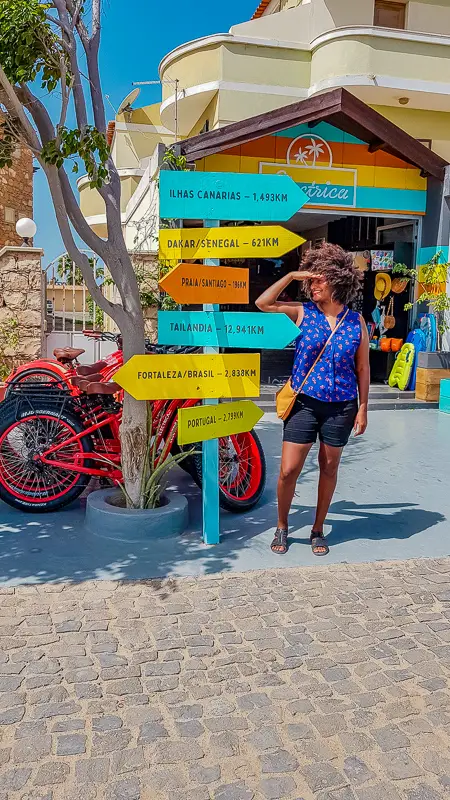
Cape Verde Airports
Cape Verde has 4 international airports spread across 4 islands:
- Sal – Amílcar Cabral International Airport (SID)
- Boa Vista – Aristides Pereira Airport (BVC)
- Santiago – Nelson Mandela International Airport (RAI)
- São Vicente – Cesária Évora International Airport (VXE)
When visiting Cape Verde, you will likely enter the island nation through Sal, Santiago (Praia), or São Vicente. Generally, fares are cheaper if you fly into Sal.
Flights to Cape Verde
Cape Verde is increasingly becoming a tourist destination and as a result, international flights are becoming more frequent and affordable. There are several airlines connecting Cape Verde to the rest of the world.
TAP Air Portugal and Cabo Verde Airlines (TACV) are the major airlines connecting the Americas and Europe to Cape Verde.
In Europe, TUI is also a major player for flights to Cape Verde.
Flight times to Cape Verde include 4 hours from Lisbon, 5 hours from Salvador, Brazil, and 7.5 hours from Washington D.C. – all non stop!
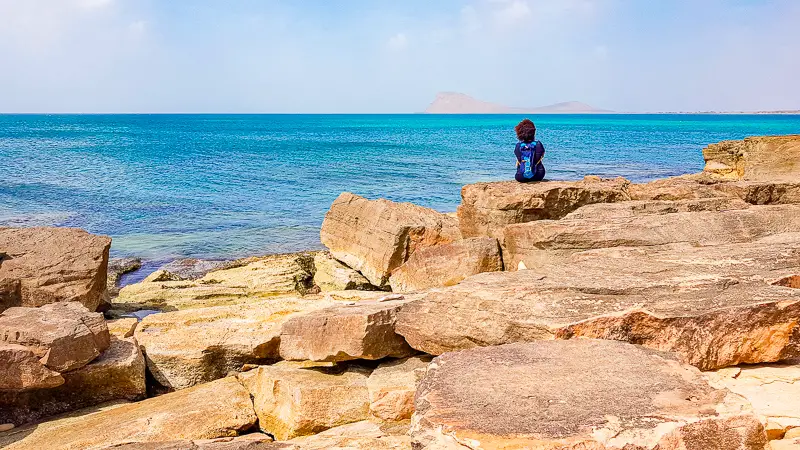
Visa entry requirements to Cape Verde
Americans visiting Cape Verde
If you are an American visiting Cape Verde, you will require a visa. You can obtain a visa in two ways.
One way to obtain a visa is by applying through the Cape Verdean embassy in or near your state.
If that is not possible, you can obtain a visa on arrival. When you arrive in a Cape Verde international airport, stand in line for VISA/PAY TAX.
You can pay at the airport by cash or credit card.
Europeans visiting Cape Verde
If you are European, you do not need a visa to visit Cape Verde. The only action you need to take as a European is to pay a tax to the Cape Verdean authorities. You can do this in one of two ways.
Pre-Register your trip
One way to pay the tax is to go to Cape Verde’s EASE website, and enter your passport and flight/trip information. You will need to pay a fee at the end of the process. This fee represents the tax to Cape Verde.
You should do this at least 5 days before your scheduled arrival. Once you arrive at the airport, stand in the queue for “VISA EXEMPT/TAX PAID”. The line might be long, but it will go fast.
Paying entry tax on arrival
If you’re unable to access EASE before your trip to pre-register, no worries! You can pay the tax on arrival. When you arrive at one of Cape Verde’s airports, be sure to stand in line for VISA/PAY TAX.
You can pay by cash or credit card.
What if I’m not an American or European?
If you are non-American and non-European, I recommend going to the official Cape Verdean website to see if you require a visa.
Cape Verde Currency
The currency used in Cape Verde is Escudos. Its symbol is $ and it is always placed after the number. For example, 330$.
Escudos is a closed currency, which means it’s only used in Cape Verde. Fortunately, Euros are also widely accepted across this island nation.
Pretty much all taxis, hotels, and businesses accept Euros as a form of payment. If your purchase requires change, there is a chance you will receive Escudos in return, or a mix of Euros and Escudos.
If you are coming from outside the Euro zone, you can exchange your money in Cape Verde or use a bank’s ATM to withdraw in Escudos.
Exchanging your currency to Escudos
Three common banks found on the islands are BCN, BCA, and Caixa. You can also find currency exchange services at your arrival airport.
For example, if you arrive via Sal international airport, you will find BCA and Caixa banks and ATMs before exiting the airport. They are located next to Departures, which is just a couple minutes walk from the Arrivals hall.
Withdrawing money in Cape Verde
If you have a bank or credit card which allows for international cash withdrawals, visit an ATM in Cape Verde and take out money in Escudos.
Most ATMs charge a fee of about 200 Escudos, which is about €2.
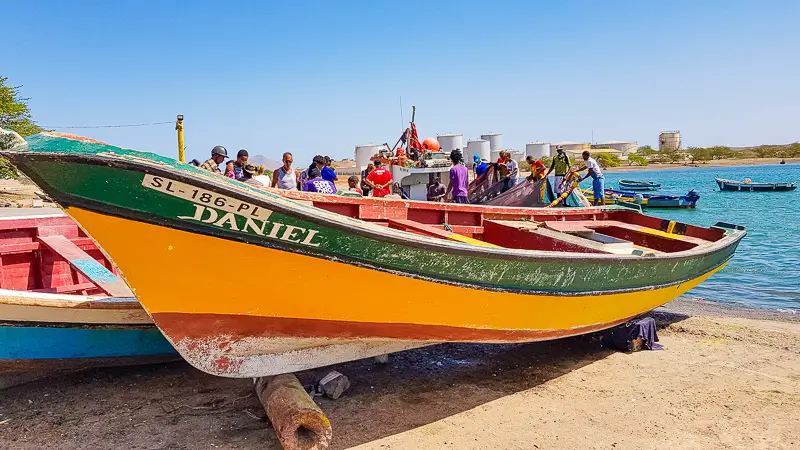
Transportation on the islands
There are two methods of transportation on the islands: taxi and alugueres.
Taxi is the most private and expensive of the two options. That’s because it is the most convenient, as you can have a taxi on demand.
Taxis are very easy to spot. They are light blue with a yellow horizontal stripe across the car doors. There are no meters in the taxis, so you will need to discuss the fare with the driver before starting the ride.
Aluguer is the cheapest method of transportation, and is what the locals use to get around the island. It is a large shared taxi, taking between 10-15 passengers.
Alugueres depart from a central stop at designated times. If the aluguer is not full, there’s a chance it will depart later in order to have more passengers. If you are limited on time, consider taking a private taxi.
Inter-island travel: How to travel between the Cape Verde isles
There are two ways of traveling between islands: plane and ferry.
The most reliable way of traveling in Cape Verde is to fly. The flights are short in duration, so it saves you time.
Ferries are available on all the islands, but they are always subject to delays or cancellations, and are not always frequent. Despite having a tropical climate year round, the ocean can be quite rough and as a result, the ferries are not regular.
If you cannot be flexible with your time, consider flying.
Flights
I mentioned above that there are four international airports in Cape Verde. In addition to these, there are also domestic airports around the country.
The Cape Verde islands with airports (both international and domestic), and thus are accessible by plane, are:
- Boa Vista
- Fogo
- Maio
- Sal
- Santiago
- São Nicolau
- Sao Vicente
To travel domestically in Cape Verde, you have just one airline: Binter Airlines.
*Pro Tip: don’t be surprised if you see Cabo Verde Airlines (TACV) selling domestic flights. TACV has a reputation for not honoring their domestic flights as they’re sold on their website. I found that the only reliable airline for traveling within Cape Verde is Binter Airlines.
Ferry
There are 2 islands in Cape Verde with no airport, which means they are only accessible by ferry.
- Brava
- Santo Antão
To access these islands, you will need to first fly to a neighboring island with an airport then take a ferry.
To access Brava, for example, you will need to fly to Fogo, then take a ferry to Brava. You can also fly to Praia, and then take a ferry from Praia to Brava.
To reach Santo Antão, you will first need to fly to São Vicente, then take a ferry to Porto Novo in Santo Antão.
Ferry schedules and tickets can be found and purchased with CV Interilhas.
Cape Verde islands
As a tourist in Cape Verde, you can visit any of the 9 inhabited islands. Some islands are more convenient to get to than others.
In this section, I give you general information about each of the Cape Verde islands including what to do and how to get there.
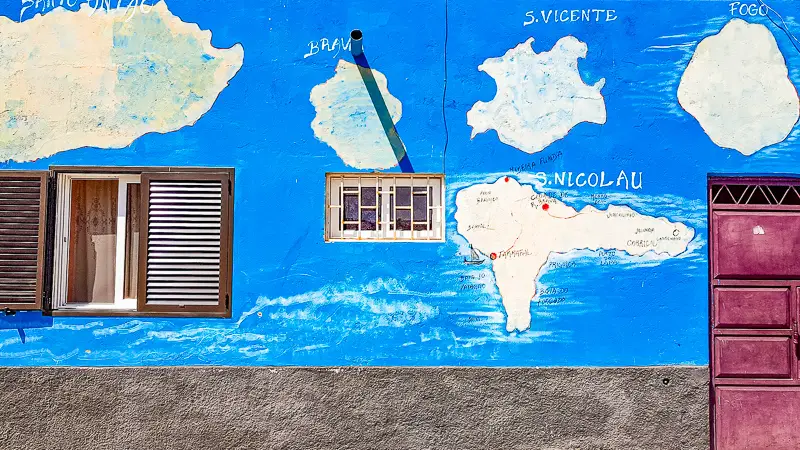
Barlavento (windward) islands in the north
Santo Antão
It’s said that Santo Antão puts the verde (‘green’ in Portuguese) in Cape Verde. Santo Antão is the greenest island of all Cape Verde despite having a contradictory landscape.
The west part of the island is arid, dry, and home to a black sand beach. The east part of Santo Antão is home to Paul Valley, mountainous areas full of lush, green vegetation. As a result, Santo Antão is a hiker’s paradise!
Things to do in Santo Antão
Activities in Santo Antão include hiking through Paul Valley, snorkeling and diving off the western coastline, and exploring the lively villages of Ponta do Sol and Ribiera Grande.
There are kilometers of hiking trails all throughout the coasts. One of the most famous hiking trails in all of Cape Verde is the path from Ponta do Sol to Cruzinha in northern Santo Antão.
This trail is 13 kilometers one way and lasts between 5-7 hours depending on your abilities. The hike takes a long time mainly because there are constant uphills and downhills.
If you don’t mind backpacking, I recommend hiking from Ponta do Sol to Cruzinha with your belongings, and sleeping in Cruzinha. The B&B, Questel BronQ is situated on Cruzinha’s beautiful coastline, and so can welcome you after the hike.
If you don’t want to backpack with your things, you could always take a taxi or aluguer back to Ponta do Sol after your hike.
*Tip: it is possible to hike the reverse route of Cruzinha to Ponta do Sol, but people who’ve done it say it is more difficult.
Getting to Santo Antão
You can only access Santo Antão by boat. There are no flights to the island.
The best way to get to Santo Antão is to first fly to São Vicente, then take a ferry from Mindelo, São Vicente to Porto Novo, Santo Antão.
CV Interlhas provides ferry service between the two islands.
São Vicente
São Vicente island is home to Mindelo, Cape Verde’s second largest city. Mindelo is also home to the deepest port in Cape Verde.
Mindelo is known for being Cape Verde’s musical and cultural capital. Like Brazil, the city holds its annual carnival in February/March. It is Cape Verde’s largest carnival celebration, complete with music, dancing, and beautiful outfits!
The dates of the carnival vary by year, so be sure to check dates before booking a trip.
Mindelo was also home to Cesária Évora, quite possibly the most famous Cape Verdean singer in the world. She was so important for the culture that her face is printed on the 2,000$ bill. And in my opinion, it is a beautiful piece of paper!

Activities in São Vicente
Some activities to do on Sao Vicente includes beach hopping, listening to live music in bars and squares, walking down Lisboa street in Mindelo, and going up Monte Verde for panoramic views of the island.
Thanks to its windy climate, São Vicente is a welcoming destination for water sports enthusiasts. There are numerous beaches around the island perfect for water activities.
Getting to São Vicente
São Vicente is best accessible by plane.
From Sal, you can fly to São Vicente with Binter Airlines in under 1 hour.
You can also fly to São Vicente from international destinations via Cesária Évora International Airport (VXE).
São Nicolau
São Nicolau is part of the windward islands, located next to Sal.
Though Ribeira Brava is the capital of São Nicolau, most accommodation options are found in Tarrafal de São Nicolau. Unlike Sal, São Nicolau is an off-the-beaten path island in Cape Verde.
If you’re looking to get away from the crowds and live like a Cape Verdean, consider a visit here.
Activities on São Nicolau
The main activity in São Nicolau is walking/hiking.
Monte Gordo Natural Park is a very popular place to explore on foot. Other destinations in São Nicolau to explore include Fajã Plain, Juncalinho, Ribeira da Prata, the rock formations in Carbeirinho, and the capital city Riberia Grande.
It’s said that Ribeira Grande is the prettiest town in all of Cape Verde, so why not take time out to explore it and spend time chatting it up with locals?
How to get to São Nicolau
São Nicolau has an airport serving domestic flights only.
The closest international airport is on Sal island. From Sal, you can fly or take a ferry to São Nicolau.
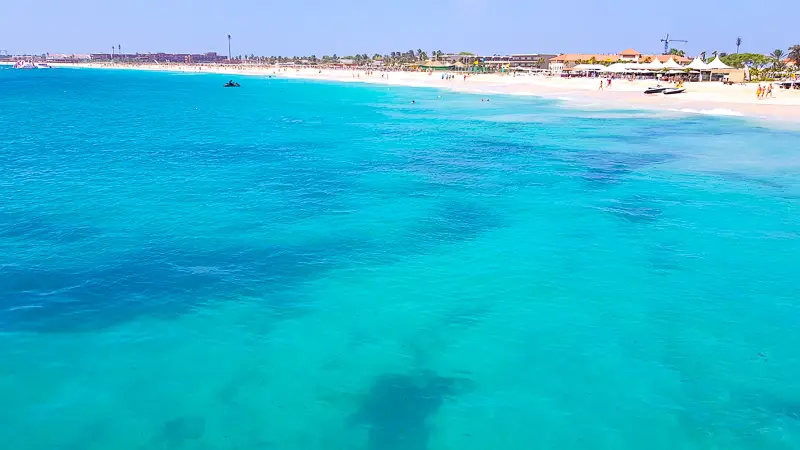
Sal
Sal island is home to some of the best beaches in Cape Verde!
If you’re looking for a relaxing trip in Cape Verde, Sal might be just what you’re looking for. It is renowned for the beaches, and is home to numerous hotels and resorts, including all-inclusive resorts, some of which are 5-star.
Sal is one of the flattest and driest islands in all Cape Verde. Its dry landscape allows for no lush vegetation, nor for food to be grown there. This means that the locals rely on imported food and goods. And so will you.
Sal is also one of Cape Verde’s windiest islands, making it a great spot for surfing and kite-surfing.
Things to do on Sal island
Activities in Sal include, but are not limited to, floating in the salt lake, visiting shark bay, snorkeling in Murdeira Bay, and witnessing the nesting and hatching of sea turtles at night.
The capital of Sal island is Espargos, but the colorful town of Santa Maria is home to the island’s beautiful beaches. Take time to visit both towns to get a glimpse of how the locals live.
Getting to Sal
Sal is home to one of the country’s international airports. In terms of international traffic, it is probably the most important airport in Cape Verde.
You’re likely to find cheaper fares to Sal than to the other islands.
TAP Air Portugal operates flights almost daily in and out of Sal, serving the American and European markets. If you are based in Europe, you also have the option to book with TUI.
Boa Vista
Boa Vista is one of the windiest islands in Cape Verde, but it’s also one of three of Cape Verde’s best beaches islands.
Like Sal, Boa Vista is a dry and flat island. It is tourism friendly, which means there are a lot of accommodation options, and getting around won’t be difficult.
Many locals will say that if you have been to Sal, then there’s no need to visit Boa Vista.
Things to do in Boa Vista
The top things to do in Boa Vista include:
- relaxing on their stretches of beaches, such as in Santa Mónica
- taking up a water sport
- snorkeling and diving
- visiting the shipwreck at Santa Maria
- exploring the white sand dunes of the Viana Desert
Getting to Boa Vista
The best way to get to Boa Vista is to take a ferry from Sal.
You also have the possibility to fly to Boa Vista, as its airport serves both domestic and international flights.
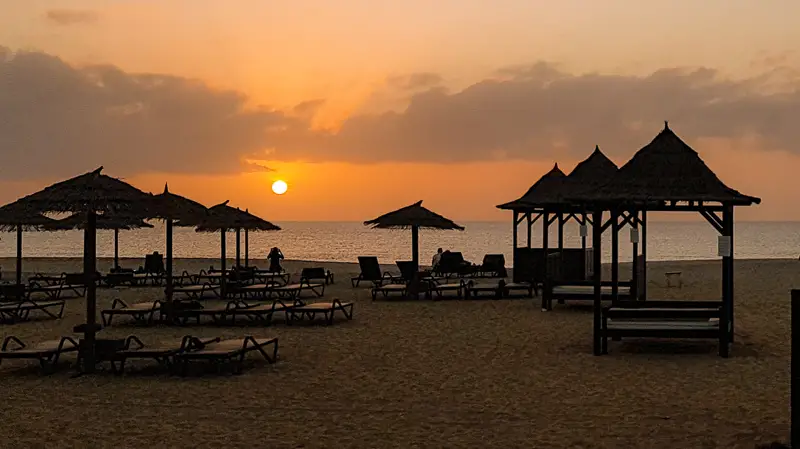
Sotavento (leeward) islands in the south
Maio
Maio is part of the Sotavento islands, but its landscape resembles that of Sal and Boa Vista in the Barlavento north.
How?
Well, Maio is also known for their white sandy beaches, flat desert landscape, and simple living.
Unlike Sal and Boa Vista, you won’t find large hotels and resorts on the island. In fact, of these three beach islands, Maio is the least visited. If you want a local feel for the Cape Verdean way of life, consider a visit to Maio.
Things to do on Maio
Despite being a small island, Maio has kept its charm by limiting the impact from tourism. Check out these activities on Maio.
- Hiking: Monte Penoso is the highest point on Maio, sitting at 436 meters. If you’re looking for an active activity on Maio, consider a hike here.
- Spend time in the capital of Maio, Vila do Maio. Watch the sunset, listen to live music, and eat cachupa.
- Support the local communities by visiting the cooperatives set up for salt mining and handmade ceramics.
Getting to Maio
The most reliable way of getting to Maio is by plane. Maio’s airport only serves inter island/domestic flights, so the ideal route for you would be to fly in and out of Praia.
A ferry is also possible between Praia and Maio, though it is less reliable.
Santiago
Santiago island is home to the capital of Cape Verde, Praia. It’s also the largest island in the archipelago. More than half of the population of Cape Verde lives on Santiago!
Santiago’s island qualities are a mix of everything you can find on the other Cape Verdean islands: cities, volcanic mountains, lush vegetation, and beaches.
Getting to Santiago
If you have a short holiday and can’t commit to spending the time to island hop, consider flying into Santiago via Nelson Mandela International Airport (RAI) and living it up there for a few days!
Santiago is also accessible by plane from the other islands.
If you will be arriving to Cape Verde via Sal, you can buy a flight with Binter and fly direct from Sal to Praia.
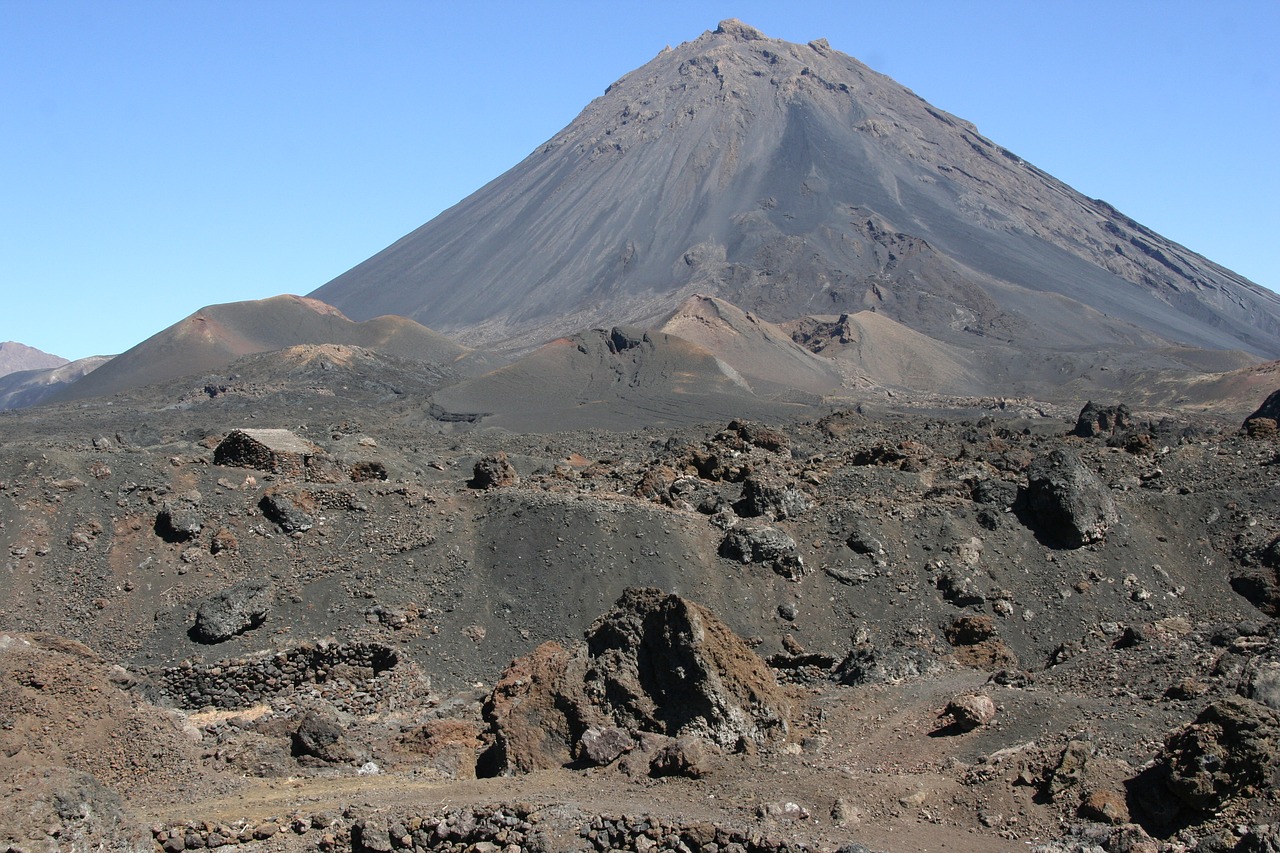
Fogo
The island of Fogo is the most unique in all of Cape Verde. The island nation of Cape Verde was created by volcanic activity, and Fogo is proof of this! Sitting at an extreme elevation of 2,829 meters is Pico do Fogo, Fogo’s active volcano.
Pico do Fogo erupted late November 2014, destroying the two villages of Portela and Bangeira in Chã das Caldeiras. The volcanic activity lasted 70+ days, ending in February 2015. Fortunately, no one was killed but 1500 people were displaced.
Following the eruption, hundreds of inhabitants returned to Chã das Caldeiras, which sits in a volcanic crater, and rebuilt their lives. Several hotels and local guides are still based here, welcoming thousands of visitors each year.
Things to do on Fogo island
There are several things to do on Fogo which are unique to this island:
- Hike near and around Pico do Fogo, Fogo’s active volcano
- Visit the local wineries. Despite being a volcanic island, Fogo’s environment allows the locals to make and sell wine.
- Explore the capital city, São Filipe
- Stay in a locally-owned hotel in Chã das Caldeiras, and hear & see firsthand accounts of the eruption and what daily life looks like.
Getting to Fogo
Fogo is best accessible by plane. You can fly to Fogo from Sal, São Vicente, and Praia. There are no international flights to Fogo.
The airport is located just outside São Filipe, the capital of Fogo.
Brava
Brava is the most southwestern island of the leeward islands, situated next to Fogo. It’s also the smallest of all the inhabited islands in the archipelago with an area spanning just under 63 square kilometers.
Brava, along with Santo Antão, is one of the greenest islands in Cape Verde. In fact, due to the unique flora and fauna on the island, it is known as The Island of Flowers.
Historically, Brava was the island all whaleboats would stop at when going to, or coming from the United States. This provided the opportunity for many Cape Verdeans to travel the world, and to even emigrate to the U.S.
If you’re truly looking for an off-the-beaten path destination in Cape Verde, head over to Brava.
Things to do on Brava
To enjoy what Brava has to offer, activities you can do include exploring the capital, Nova Sintra – named after the town of Sintra in Portugal, and visiting the villages of Cachaço, João d’Nole, and Faja d’Agua. In Faja d’Agua, you will also find natural pools.
The main activity to do on Brava is to hike. You can take advantage of their hiking trails, such as the hike from Nova Sintra to Fontainhas, the highest point on Brava. You can also hike from Nova Sintra to Faja d’Agua.
Getting to Brava
The main reason Brava sees less tourism than Sal, Santiago, and even Fogo is because of how difficult it is to get there.
To get to Brava from your home country, you will first need to fly in to one of Cape Verde’s international airports. Once in the country, you will then take an inter-island flight to Fogo. Again, Fogo’s airport only serves domestic flights.
From Fogo, you will take a ferry to Brava. The ferry should last just under 2 hours.
Ferries between Fogo and Brava are not daily. The latest ferry schedules can be found through CV Interilhas.
Another way of traveling to Brava is to fly into Praia, then take a ferry from Praia to Brava.
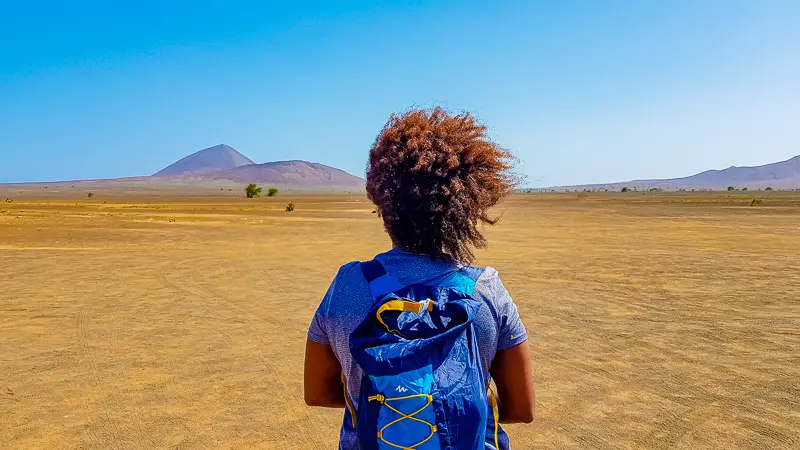
Practical tips for traveling in Cape Verde
Get travel insurance
If you have a travel credit card which offers full trip coverage, such as Chase Reserve, be sure to book everything with the card to be protected. I’m talking flights, ferry, and hotel bookings.
Another option is to purchase travel insurance specifically for this trip, such as with World Nomads.
If you’re coming from Europe, it’s important to note that Cape Verde is covered by European travel regulations only if you purchase your flights between Europe and Cape Verde in one booking. If you book inter-island flights within Cape Verde (departure and arrival in Cape Verde), you are not covered by European regulation.
Download the country map offline
I recommend to download the Cape Verde map offline via the GPS app of your choice. I normally use Google Maps.
Here is a quick video tutorial I made showing you how to download a map offline.
Bring cash
The preferred method of payment with locals is cash. As long as it is Euros or Escudos, it will be accepted.
Most of the large hotels and resorts accept credit cards, but the locally owned hotels or Bed & Breakfasts will only accept cash.
Confirm ferry departures
The day before, or the day of, your ferry departure, contact the ferry company (i.e. CV INTERILHAS) to confirm your ferry will depart, and that it will depart on time.
Listen to live Cape Verdean music
OK, this one isn’t a practical tip really, but more of a strong recommendation! I’m not sure you can really enjoy your visit to Cape Verde without listening to the local music live at least once.
Famous around the world, Cape Verdean music offers some of the sweetest sounds you’ll ever hear.
Morna is one of the traditional types of music to come out of Cape Verde, made famous by Cesária Évora. The artists normally sing in their native Creole. Other types of music include funaná, coladeira, and batuque.
No matter what island or town you visit, you will certainly find live music playing in a local bar or cafe.
You’ll also be able to find some spots where you can dance kizomba!
7 Portugese Phrases to Know
I can speak 3 languages, but Portugese isn’t one of them. To prepare for my trip to Cape Verde, I decided to try learning some Portugese through Duolingo.
I learned some words and phrases that proved to be useful on my trip, and I’d like to share some of them with you. I must admit that, based on these phrases alone, many Cape Verdeans thought I spoke fluent Portugese!
- Bom dia – This phrase means “good morning” or “good day”. It is a great way to greet someone as long as it is before lunch time.
- Boa tarde – This one means “good afternoon” and it’s a greeting to be used after lunch time.
- Obrigada/o – This means “thank you”. If you are a woman, you’d say “obrigada”. If you’re a man, it’s “obrigado”.
- Desculpe – This phrase means “sorry”
- Com licensa – Use this phrase if you need to grab someone’s attention or need them to move out of the way. In English, it translates to “excuse me”.
- Por favor – Like in Spanish, this means “please”.
- Você fala inglais? – You can probably guess this one! It means “do you speak English?”
*Pro tip: be sure to download the Portugese language offline in your translation app, such as Google Translate.
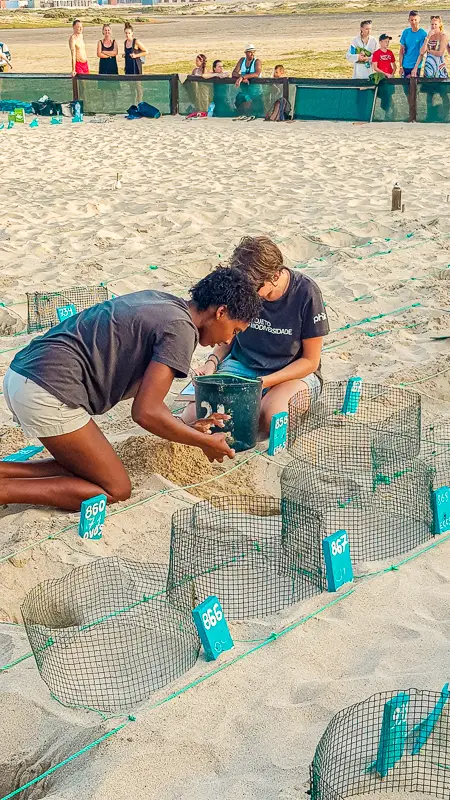
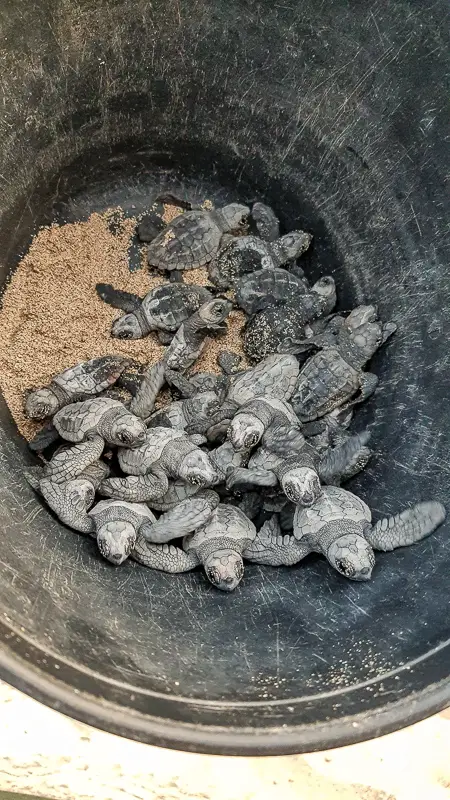
Cape Verde seasonal activities
Whale Watching
February-March is the best time to visit Sal if you want to go whale watching, as this is their mating season. You can sign up for a whale watching tour which involves going out on a boat for about 3 hours. If you’re lucky, you’ll be able to spot dolphins too.
Carnival
Like in Brazil and the Caribbean, Carnival is largely celebrated in Cape Verde. Specifically in Mindelo, São Vicente.
Carnival is normally held in February or March. However, the exact dates vary each year depending on when Easter is.
Turtle nesting
Cape Verde is the third largest nesting site for loggerhead turtles in the world. The turtles mainly nest on Sal, Boa Vista, and Maio.
The loggerhead turtles lay their nests between July-October, and hatching begins immediately after. If you visit in early November, you could still have the chance to witness turtles hatching.
Santa Maria Music Festival
Annually in September, Santa Maria on Sal island holds their music festival. For a couple of days, the locals come together to celebrate music with live performances, food stalls, and parties on the streets.
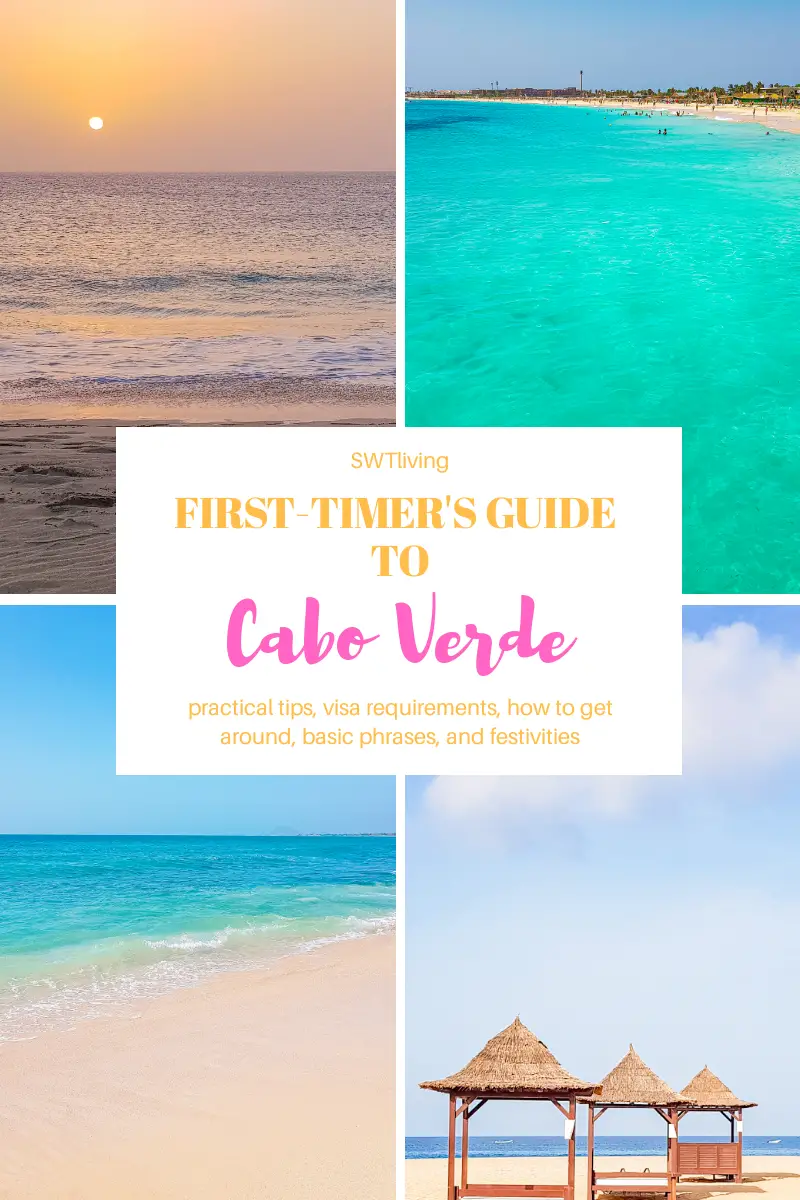

If you have any questions about visiting Cape Verde, drop me a message!
Bisous.
Disclosure: This post contains affiliate link(s). An affiliate link means I may receive a commission or referral fees if you click through and make a purchase through my link, at no additional cost to you.

